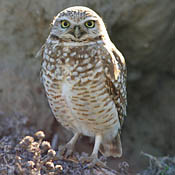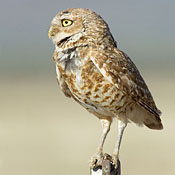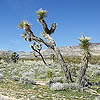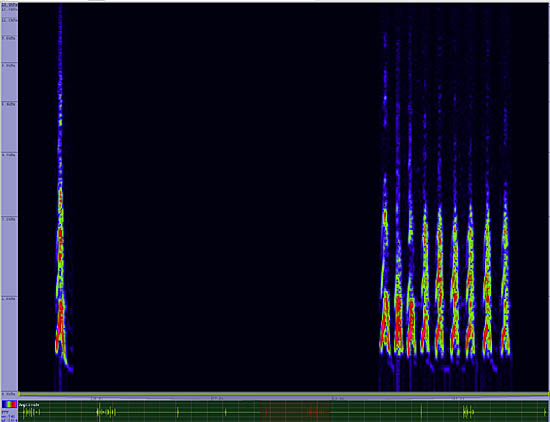Burrowing Owl
Athene cunicularia

Owls

Length: 10 in. (24 cm )
This long-legged owl is often active during the daytime and most often seen sitting on the ground near its burrow. Occasionally they fly up to fence posts or telephone lines where they become even more obvious. Burrowing Owls are confined to prairies, grasslands and open desert areas where they feed on large insects, small mammals and lizards. This species nests in similar habitats all the way south to Argentina.
The four-digit banding code is BUOW.
Bibliographic details:
- Article: Burrowing Owl
- Author(s): Dr. Biology
- Publisher: Arizona State University School of Life Sciences Ask A Biologist
- Site name: ASU - Ask A Biologist
- Date published: 13 Jul, 2017
- Date accessed:
- Link: https://askabiologist.asu.edu/activities/bird/burrowing-owl
APA Style
Dr. Biology. (Thu, 07/13/2017 - 15:36). Burrowing Owl. ASU - Ask A Biologist. Retrieved from https://askabiologist.asu.edu/activities/bird/burrowing-owl
Chicago Manual of Style
Dr. Biology. "Burrowing Owl". ASU - Ask A Biologist. 13 Jul 2017. https://askabiologist.asu.edu/activities/bird/burrowing-owl
Dr. Biology. "Burrowing Owl". ASU - Ask A Biologist. 13 Jul 2017. ASU - Ask A Biologist, Web. https://askabiologist.asu.edu/activities/bird/burrowing-owl
MLA 2017 Style
Be Part of
Ask A Biologist
By volunteering, or simply sending us feedback on the site. Scientists, teachers, writers, illustrators, and translators are all important to the program. If you are interested in helping with the website we have a Volunteers page to get the process started.








